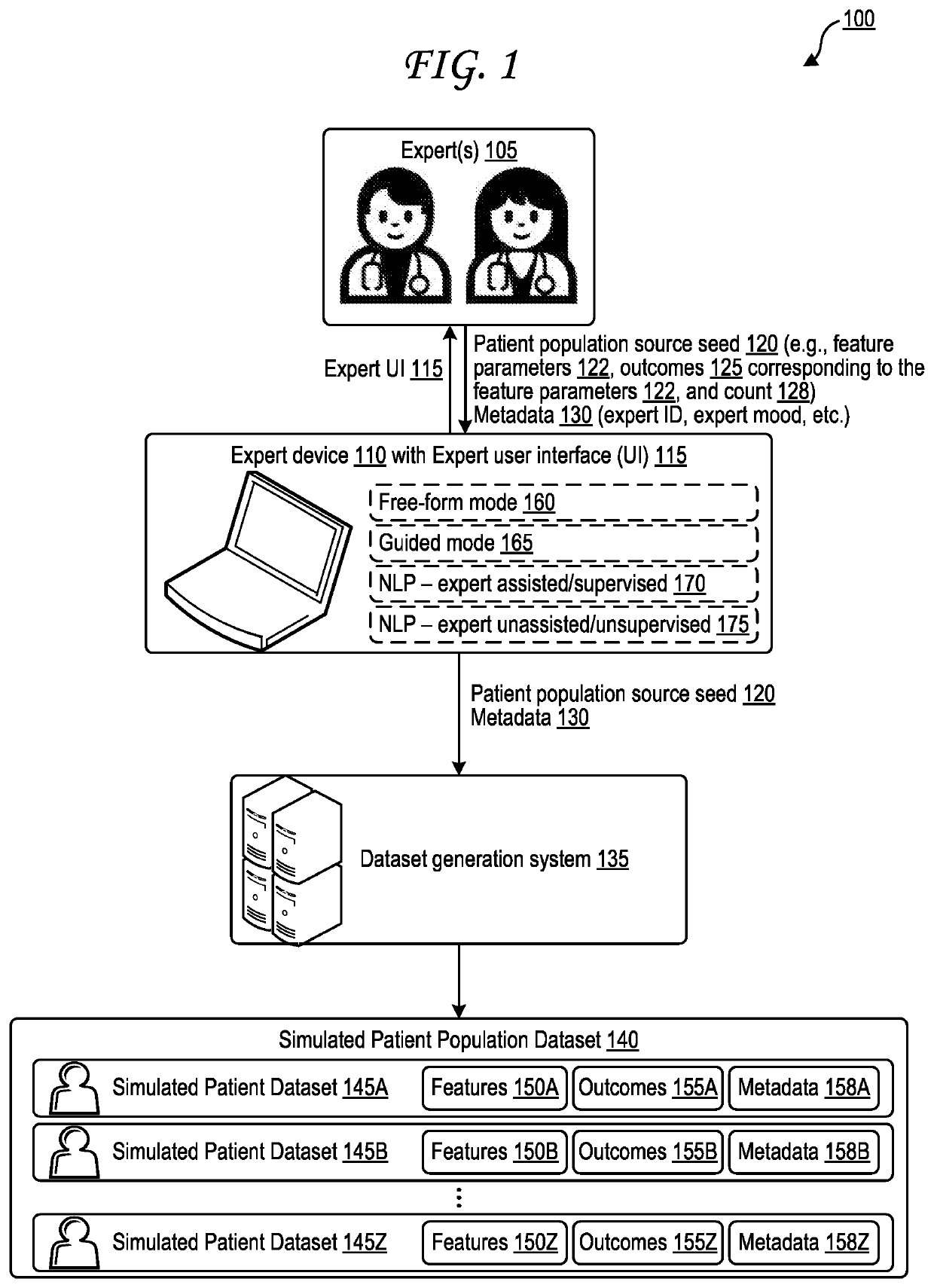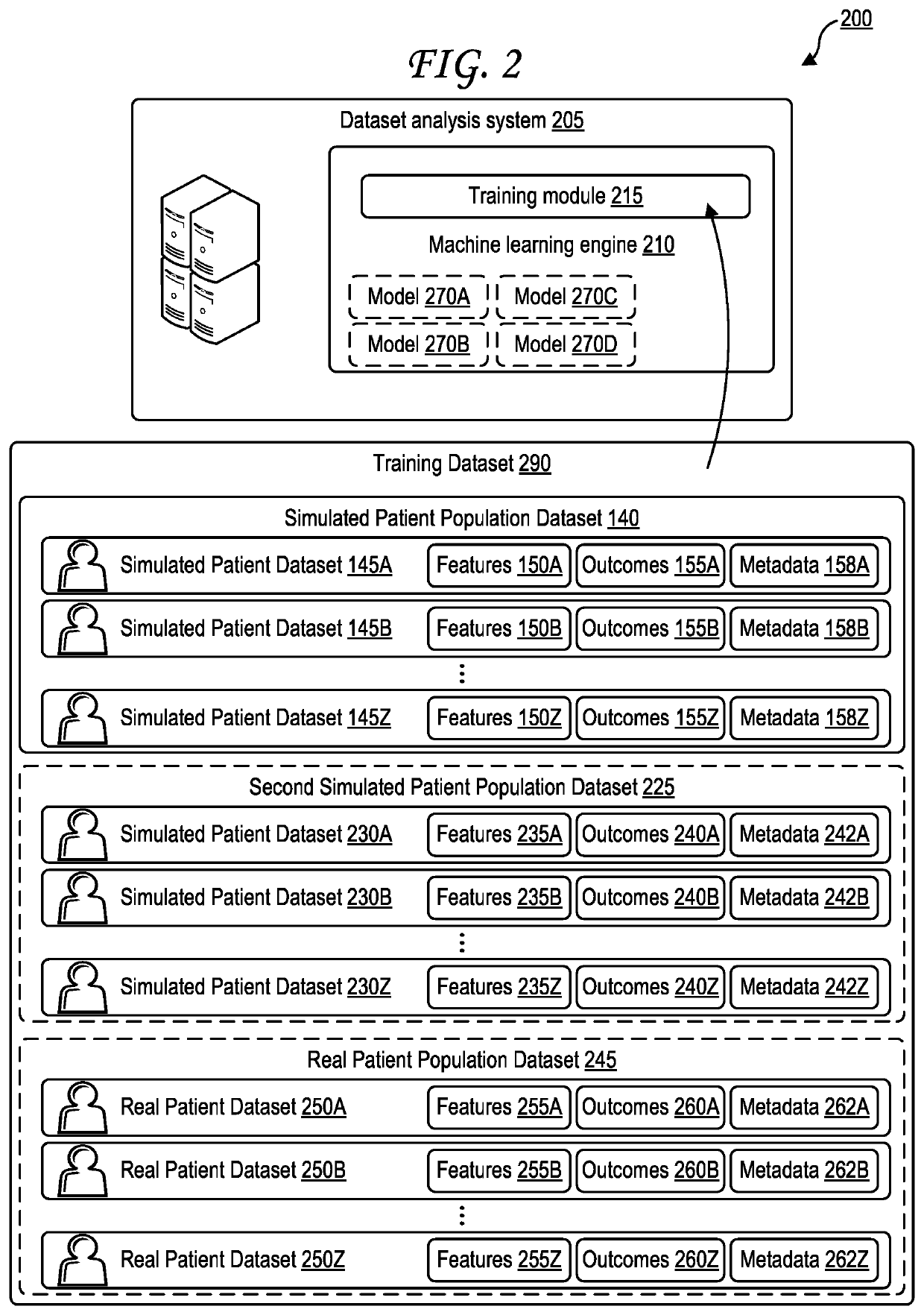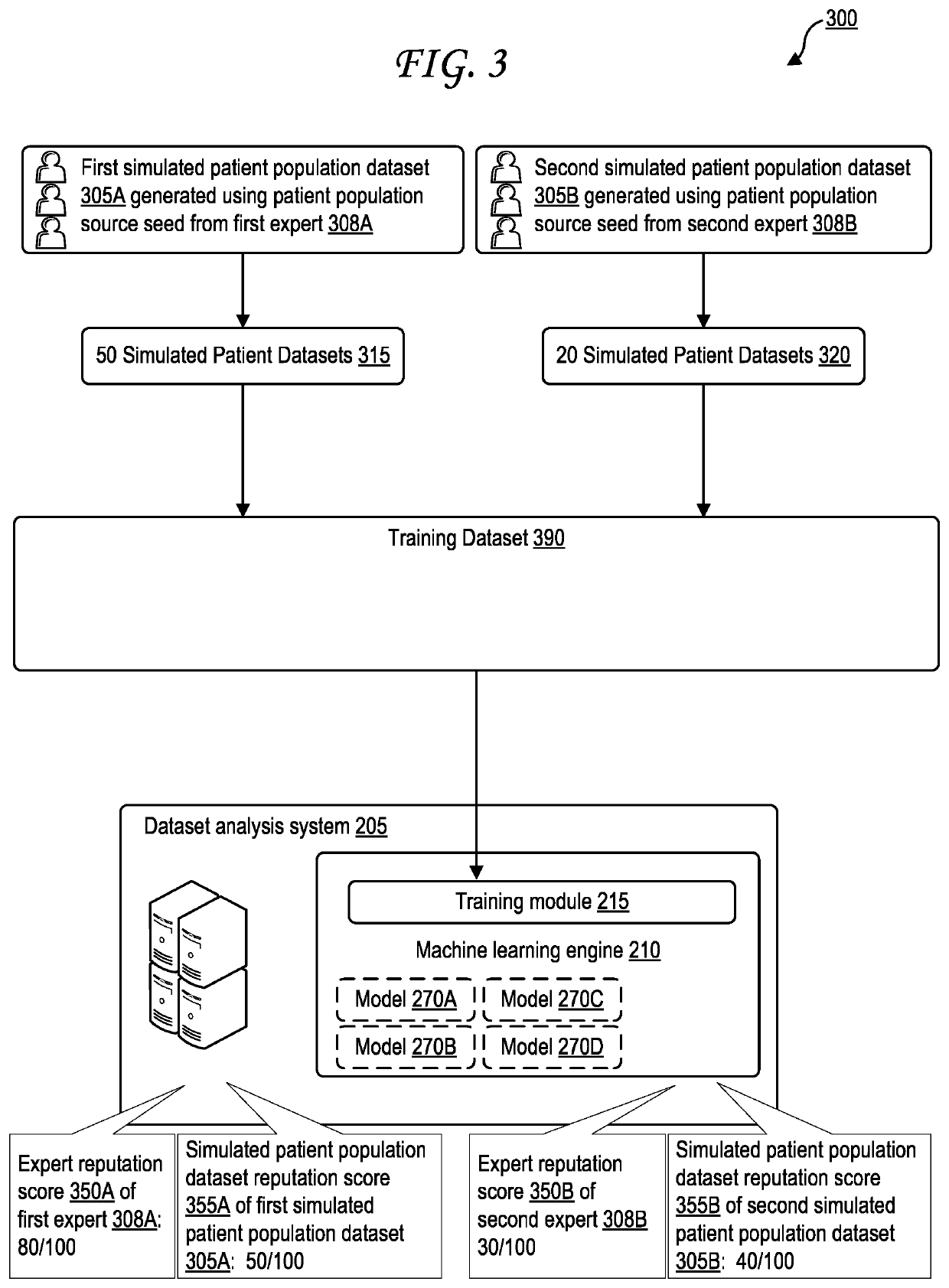Generation of Simulated Patient Data for Training Predicted Medical Outcome Analysis Engine
a technology of prediction engine and patient data, applied in machine learning, instruments, computing, etc., can solve problems such as delayed diagnosis, missed diagnosis, and short supply of qualified medical professionals with expertise relevant to a patient's problem
- Summary
- Abstract
- Description
- Claims
- Application Information
AI Technical Summary
Benefits of technology
Problems solved by technology
Method used
Image
Examples
Embodiment Construction
[0027]A dataset generation system is described that receives feature parameters, each feature parameter identifying possible values for one of a set of features. The dataset generation system receives outcomes corresponding to the feature parameters. The dataset generation system generates a simulated patient population dataset with multiple simulated patient datasets, each simulated patient dataset associated with the outcomes and including feature values falling within the possible values identified by the feature parameters. A dataset analysis system may train a machine learning engine based on the simulated patient population dataset and optionally additional simulated patient population datasets. The machine learning engine generates predicted outcomes based on the training in response to queries identifying feature values.
[0028]FIG. 1 is a block diagram illustrating generation of a simulated patient population dataset based on a patient population source seed and on expert-pro...
PUM
 Login to View More
Login to View More Abstract
Description
Claims
Application Information
 Login to View More
Login to View More - R&D
- Intellectual Property
- Life Sciences
- Materials
- Tech Scout
- Unparalleled Data Quality
- Higher Quality Content
- 60% Fewer Hallucinations
Browse by: Latest US Patents, China's latest patents, Technical Efficacy Thesaurus, Application Domain, Technology Topic, Popular Technical Reports.
© 2025 PatSnap. All rights reserved.Legal|Privacy policy|Modern Slavery Act Transparency Statement|Sitemap|About US| Contact US: help@patsnap.com



